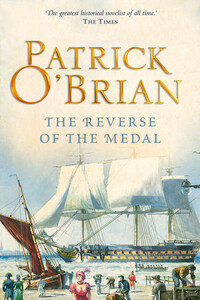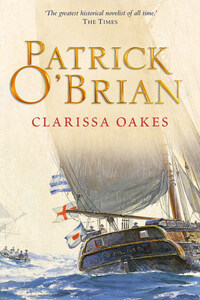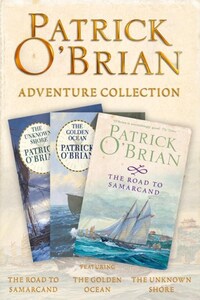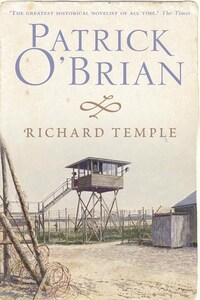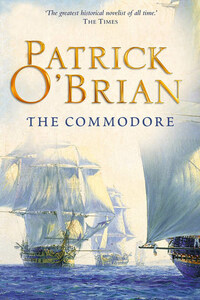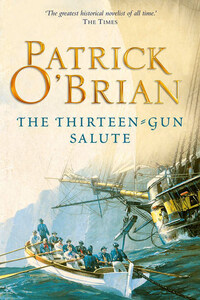PATRICK OâBRIAN
The Reverse of the Medal
Copyright
This novel is entirely a work of fiction. The names, characters and incidents portrayed in it are the work of the author's imagination. Any resemblance to actual persons living or dead, events or localities is entirely coincidental.
Harper
An imprint of HarperCollinsPublishers Ltd. 1 London Bridge Street London SE1 9GF
www.harpercollins.co.uk
Copyright © Patrick OâBrian 1986
Patrick OâBrian asserts the moral right to be identified as the author of this work
A catalogue record for this book is available from the British Library
All rights reserved under International and Pan-American Copyright Conventions. By payment of the required fees, you have been granted the non-exclusive, non-transferable right to access and read the text of this ebook on-screen. No part of this text may be reproduced, transmitted, down-loaded, decompiled, reverse engineered, or stored in or introduced into any information storage and retrieval system, in any form or by any means, whether electronic or mechanical, now known or hereinafter invented, without the express written permission of HarperCollins ebooks
HarperCollinsPublishers has made every reasonable effort to ensure that any picture content and written content in this ebook has been included or removed in accordance with the contractual and technological constraints in operation at the time of publication
Source ISBN: 9780006499268
Ebook Edition © DECEMBER 2011 ISBN: 9780007429387 Version: 2016-09-30
The sails of a square-rigged ship, hung out to dry in a calm.
1 Flying jib
2 Jib
3 Fore topmast staysail
4 Fore staysail
5 Foresail, or course
6 Fore topsail
7 Fore topgallant
8 Mainstaysail
9 Main topmast staysail
10 Middle staysail
11 Main topgallant staysail
12 Mainsail, or course
13 Maintopsail
14 Main topgallant
15 Mizzen staysail
16 Mizzen topmast staysail
17 Mizzen topgallant staysail
18 Mizzen sail
19 Spanker
20 Mizzen topsail
21 Mizzen topgallant
Illustration source: Serres, Liber Nauticus. Courtesy of The Science and Technology Research Center, The New York Public Library, Astor, Lenox, and Tilden Foundation
Authorâs Note
Those who have read any of the scores of books about Lord Cochrane, or the Earl of Dundonald as he became on his fatherâs death, will remember that he was tried before Lord Ellenborough at the Guildhall for a fraud on the Stock Exchange and found guilty.
Lord Cochrane and his descendants always passionately maintained that he was not guilty and that Lord Ellenboroughâs conduct of the trial was grossly unfair; and most of his biographers, including Professor Christopher Lloyd, the best of them all, agree. Lord Ellenborough and his descendants, however, took the opposite view, and one of them set about refuting the publications of the tenth, eleventh and twelfth earls in a book devoted to the question. But he found that he was not competent to deal with the legal aspects and he handed over the task, together with his papers, to Mr Attlay of Lincolnâs Inn, a very able lawyer whose long, fully-documented and closely-reasoned book might shake all but the most determined of Lord Cochraneâs supporters.
Yet the function of Mr Attlayâs book, as far as this tale is concerned, was not to prove or disprove the guilt of either side but rather to show exactly how the trial proceeded, and this knowledge I have used, simplifying the complex legal issues, annihilating scores of witnesses, but carefully retaining the structure of the trial, together with its curious timetable. The reader may therefore accept the sequence of events, almost unbelievable to a modern ear, as quite authentic.
Chapter One
The West Indies squadron lay off Bridgetown, sheltered from the north-east tradewind and basking in the brilliant sun. It was a diminished squadron, consisting of little more than the ancient Irresistible, wearing the flag of Sir William Pellew, red at the fore, and two or three battered, worn-out, undermanned sloops, together with a storeship and a transport; for all the seaworthy vessels were far away in the Atlantic or Caribbean, looking for the possible French or American men-of-war and the certain privateers, numerous, well-armed, well-handled, full of men, swift-sailing and eager for their prey, the English and allied merchant ships.
Yet although they were old, weather-worn and often iron-sick they were a pleasant sight lying there on the pure blue sea, as outwardly trim as West Indies spit and polish could make them, with paint and putty disguising the wounds of age and their bright-work all ablaze; and although some of them had suffered so from fever in Jamaica and on the Spanish Main that they could scarcely muster hands enough to win their anchors, there were still plenty of men, both officers and foremast-jacks, who were intimately acquainted with the ship that was beating up against the steady breeze and with many of the people in her. She was the
